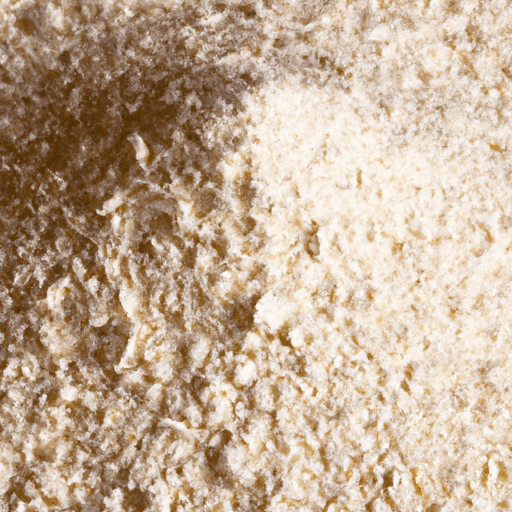Exploring the Delights of Malted Barley Flour: A Versatile Ingredient
If you’ve ever found yourself perusing the aisles of a specialty grocery store or experimenting in the kitchen, you may have come across malted barley flour. This unique ingredient, derived from the sprouted barley grain, adds a delightful twist to your culinary endeavors. Let’s embark on a journey to uncover the wonders of this versatile flour.
A Taste of Complexity
Malted barley flour offers a distinct depth of flavor that sets it apart from traditional wheat flours. It boasts a rich, nutty taste with subtle hints of caramel and toasty notes. This complexity can uplift your favorite recipes by infusing them with an alluring aromatic profile. Whether used in small amounts or as the primary flour, malted barley flour brings a unique touch to your dishes.
Versatility in Cooking
Culinary creativity knows no bounds when it comes to malted barley flour. Its versatility ensures a wide range of applications across various recipes. Here are a few common uses that demonstrate its culinary prowess:
1. Baking Marvels
Due to its high protein and gluten content, malted barley flour makes an excellent addition to baked goods. From rustic bread to tender pastries and everything in between, this flour helps enhance texture, moisture retention, and overall flavor. You can substitute up to 15-20% of your traditional flour with malted barley flour for a delightful twist.
2. Thickening Agent
Thicken up your stews, soups, and sauces with malted barley flour. Its fine texture helps in creating smooth and velvety textures. Mix it with a bit of water, creating a slurry to avoid clumps, and incorporate it into your favorite savory dishes. It adds body and depth while imparting a subtle nutty flavor.
3. Coating and Binding Agent
Malted barley flour’s binding properties are invaluable in recipes that require a coating or a binding agent. Dip your chicken strips or vegetable fritters in malted barley flour before frying to achieve a beautifully golden and crispy exterior. Embrace the versatility and experiment with various spices to truly make your dishes shine.
Nutrition and Health Benefits
Apart from its culinary attributes, malted barley flour offers several nutritional and health benefits. Rich in vitamins, minerals, and fiber, it adds a nutritious boost to your meals without compromising taste. Here’s a snapshot of its nutritional profile:
- Fiber: Malted barley flour is an excellent source of dietary fiber, aiding digestion and promoting satiety.
- Protein: Packed with protein, this flour contributes to muscle development and repair.
- Vitamins and Minerals: Malted barley flour contains essential vitamins and minerals, including iron, magnesium, and B vitamins.
Tracing the Roots
Malted barley flour has an intriguing history dating back thousands of years. Historically, malted barley was primarily used in beer-making to activate enzymes for fermentation. Over time, this versatile ingredient found its way into our kitchens, elevating the flavors of countless dishes.
Fun Facts about Malted Barley Flour
- Malted barley is a crucial component in whiskey production, imparting unique flavors during the mashing process.
- The enzyme activity during malting gives malted barley flour its characteristic nutty and toasty flavors.
- The process of malting involves soaking barley in water, allowing it to germinate, and then halting germination through drying and grinding.
In conclusion, malted barley flour is a hidden gem waiting to be explored in your culinary escapades. Its complex taste, versatility, and impressive nutritional benefits make it a valuable ingredient in various dishes. So, next time you’re in the mood for culinary experimentation, let malted barley flour be your delightful food companion!
Interesting Facts about Malted Barley Flour:
Origin: Malted barley flour is made from barley grains that are soaked in water, allowed to germinate, and then dried and ground into a fine powder. Barley is one of the oldest cultivated grains and has been used for food and brewing for thousands of years. It is believed to have originated in the Fertile Crescent region of the ancient Near East.
Common Uses: Malted barley flour is commonly used in baking as a nutritious and flavor-enhancing ingredient. It is often added to bread, muffins, pancakes, waffles, and other baked goods to improve texture, enhance flavor, and promote browning. Malted barley flour is also used in the production of beer and whiskey.
Nutritional Benefits: Malted barley flour is a good source of nutrients. It contains dietary fiber, protein, essential amino acids, and a variety of minerals and vitamins, including magnesium, iron, zinc, and B vitamins. It has a lower glycemic index than refined flours, making it a suitable option for individuals looking to manage their blood sugar levels.
Unique Properties: Malted barley flour possesses unique properties due to the malting process. During malting, the enzymes present in barley initiate the breakdown of complex carbohydrates into simpler sugars, making them more easily digestible. These enzymes can also enhance fermentation in baked goods, leading to improved rising and a softer texture.
Historical Significance: Barley was one of the first cereal crops cultivated by humans and played a significant role in the development of early civilizations. It has been found in archaeological sites dating back thousands of years, such as ancient Egyptian tombs and Neolithic settlements. Throughout history, barley has been a staple grain, providing sustenance to millions of people worldwide.
These facts provide an overview of malted barley flour, including its origin, common uses, nutritional benefits, and historical significance.




Use the share button below if you liked it.
It makes me smile, when I see it.